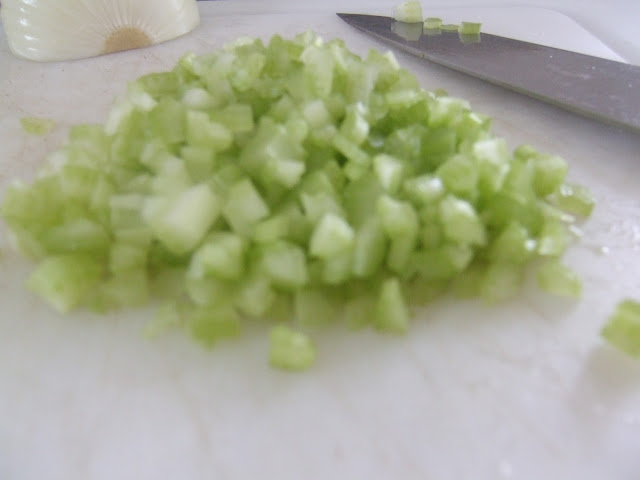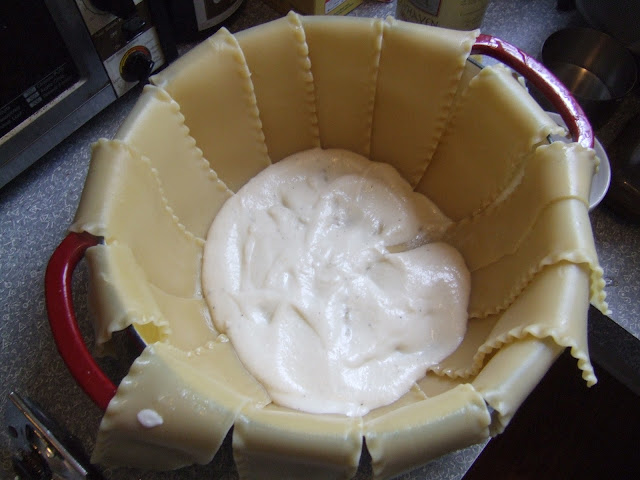After over a month, my homemade pancetta was finally ready. My first observation was that it seemed smaller since I first hung it up, but maybe that was my imagination. Also, the outside had formed a fairly tough crust, which I cut off before cooking. If you haven't already, go back and check the previous posts on how to cure the pancetta.
I started by cutting off the kitchen twine.
Notice the dark crust on the ends of the meat that I mentioned earlier.
When I cut into the pancetta, it looked exactly like it was supposed to. The inside was firm but still malleable, and the fat almost melted in your hand.
Just for fun, I also bought some pancetta from a butcher in the area. The first thing I noticed was that theirs had a good deal more fat compared to lean meat than mine did.
Also, when I fried them up, I thought mine was a touch too salty. However, I easily fixed this by soaking the diced pork in cold water for about 45 minutes before I cooked it.
You can either cook it diced like this or sliced it into thin rounds, and cook it more like bacon.
Cook it in a frying pan over medium to medium high heat until crisp.
You don't need to add any oil to the pan. There'll be plenty of fat that renders from the pancetta.
And there you go! I really hope you try this; the result was well worth it. Also, it saves you a bunch of money. I bought the 3 lb piece of pork belly for about 10 bucks, and I already had all the spices. The only difficult thing to find was the pink salt, which I talked about in a previous post. Anyway, pancetta usually costs at least 20 dollars per pound, so I'm guessing I made about 50-60 dollars worth of pancetta from only 15 dollars. Pretty good, huh?
Of course, you can use this in place of bacon for any recipe, or you can have it with fresh pasta, which is one of my favorites. I'll be posting a recipe for pasta carbonara soon.
Also, here are all the links to previous posts, so you can go back and see the whole process:

















































